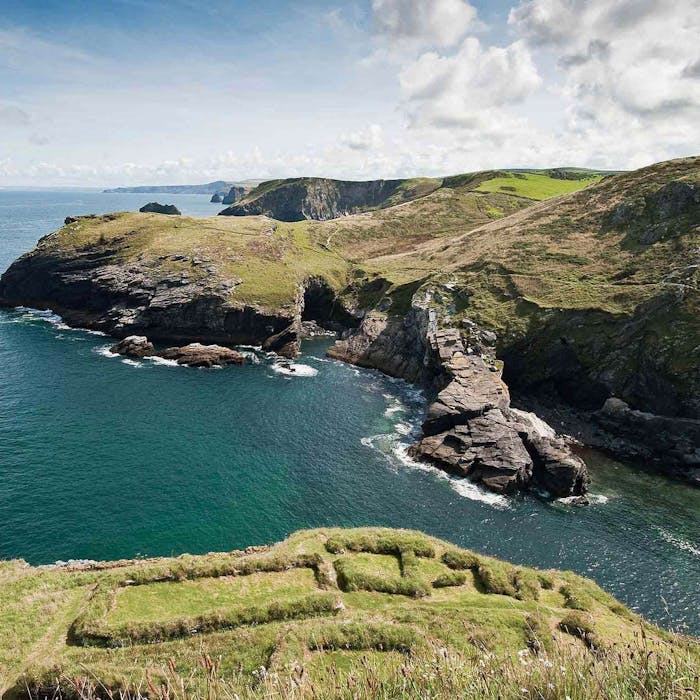
Tintagel - the breathtaking home of the legendary King Arthur
Tintagel Castle is a now-ruined medieval-era creation located on the small peninsula of Tintagel Island, in north Cornwall. Its location is famed as the legendary birthplace of King Arthur, and the 13th-century castle that stood here was built several centuries after his supposed reign, in honour of the mythic British hero king.
Tintagel has been shown to have been an active community dating back to at least the Roman period. Although archaeologists are uncertain as to the significance of the area for the Romans, small finds including pottery and coins do suggest presence on the headland during the 3rd and 4th centuries.
From about AD 450 until about AD 650 Tintagel was a prosperous site, involved in trade with the Mediterranean world. Historians believe that it was a secular stronghold of the then rulers of Dumnonia (Devon and Cornwall), because it is strongly defensible - the island is accessible from the mainland only by a narrow neck of land.
There is little evidence of activity there from the mid-7th century until Geoffrey of Monmouth's History of the Kings of Britain introduced the legendary figure of King Arthur. The book contains a tale of Arthur's birth in Tintagel. and the castle itself was built on the site by Richard, 1st Earl of Cornwall in the 13th century to establish a connection with the Arthurian legends, and because it was seen as the traditional place for Cornish kings. The castle was built in 1233 in a more old-fashioned style for the time to make it appear more 'ancient'. However, little is known as to how much the castle was actually used - Richard joined the Crusades in 1240, and is unlikely to have spent much time in Cornwall.
By 1337, when the Duchy of Cornwall was created, the great hall of the castle was in decay. It steadily fell into disrepair, and by 1600 the site was largely deserted.
Fascination for the castle grew during the Victorian era, when the ruins became a tourist destination, due to the popularity of the Arthurian legends. It continues to be visited by tourists today, and is is one of English Heritage's top five attractions.
Further reading
Links to external websites are not maintained by Bite Sized Britain. They are provided to give users access to additional information. Bite Sized Britain is not responsible for the content of these external websites.
